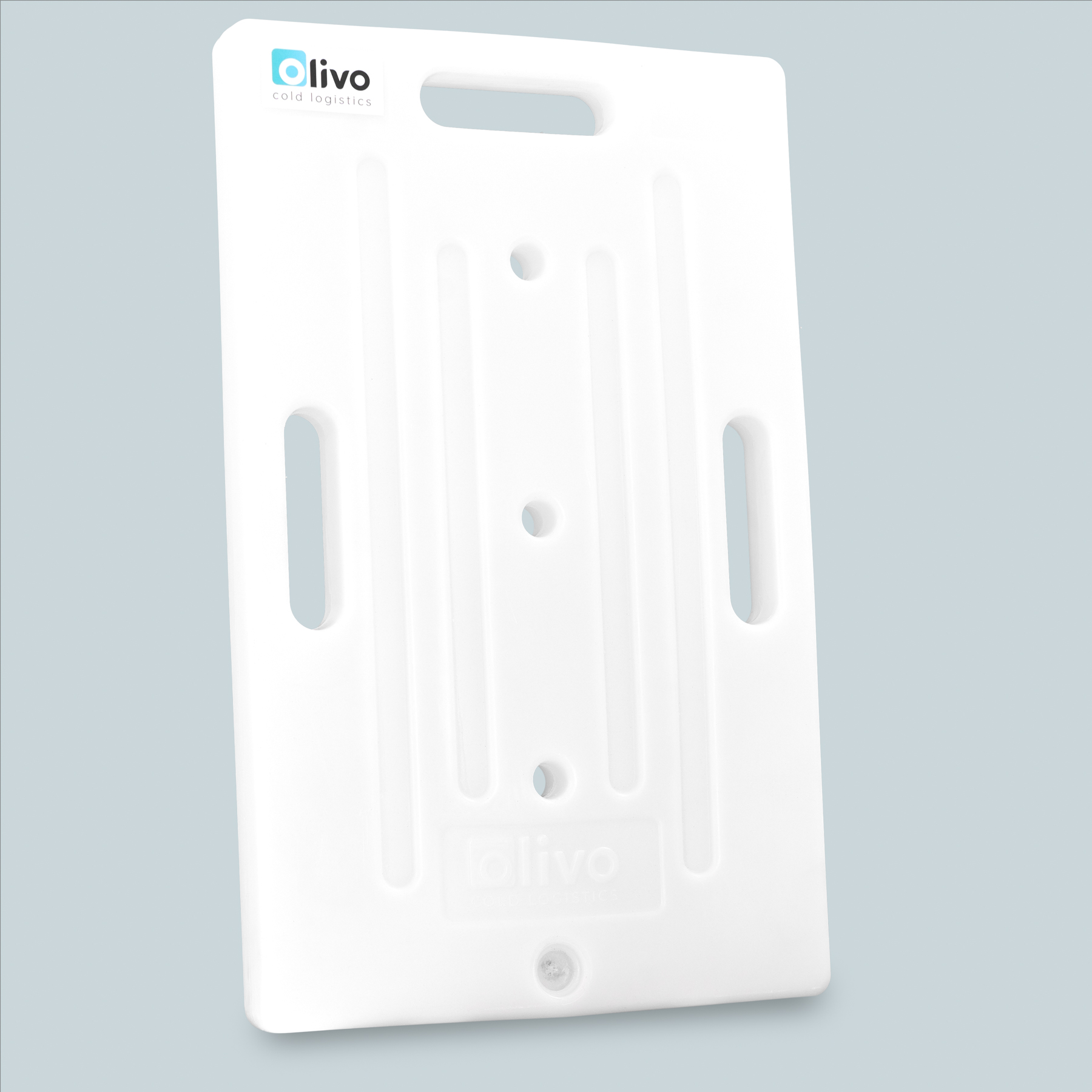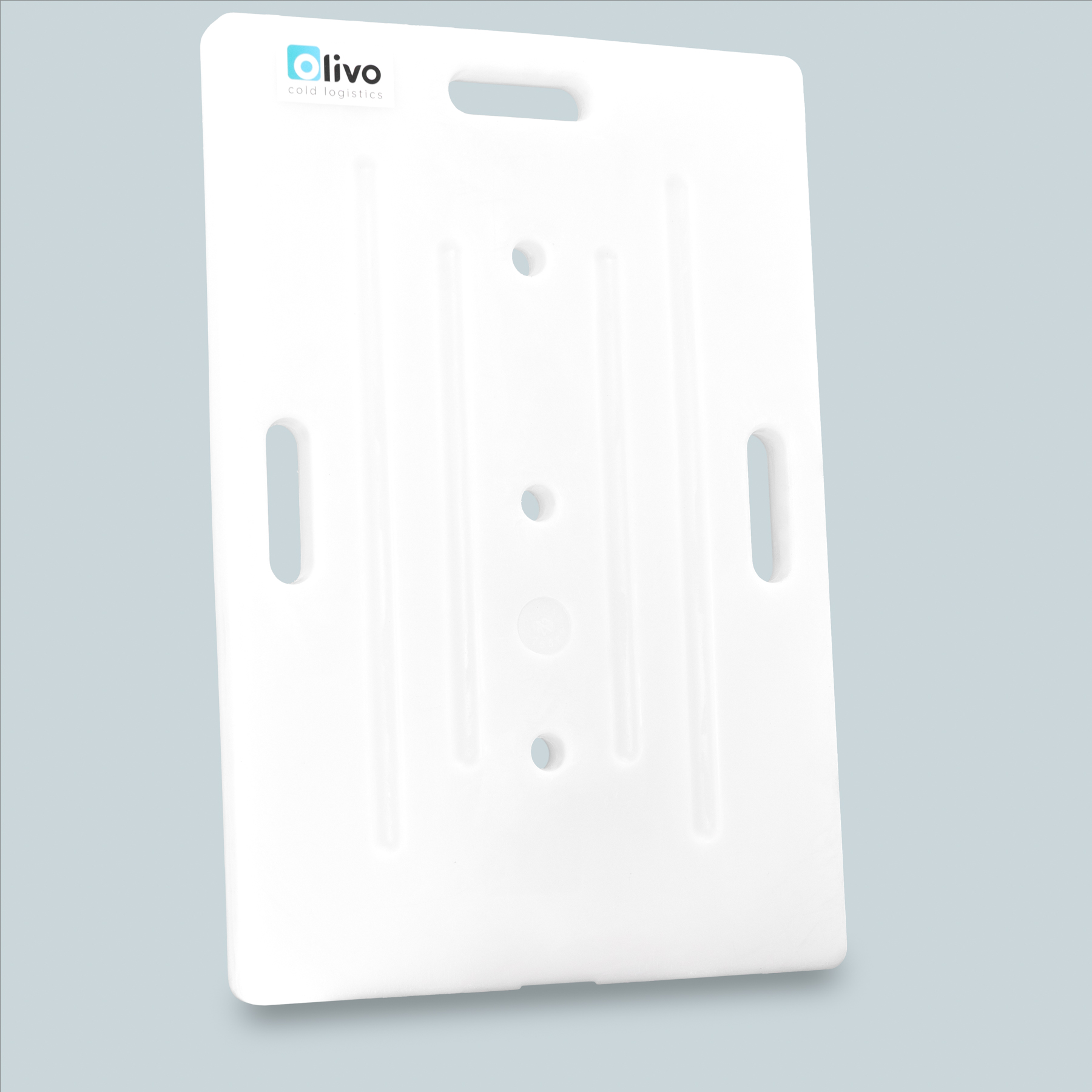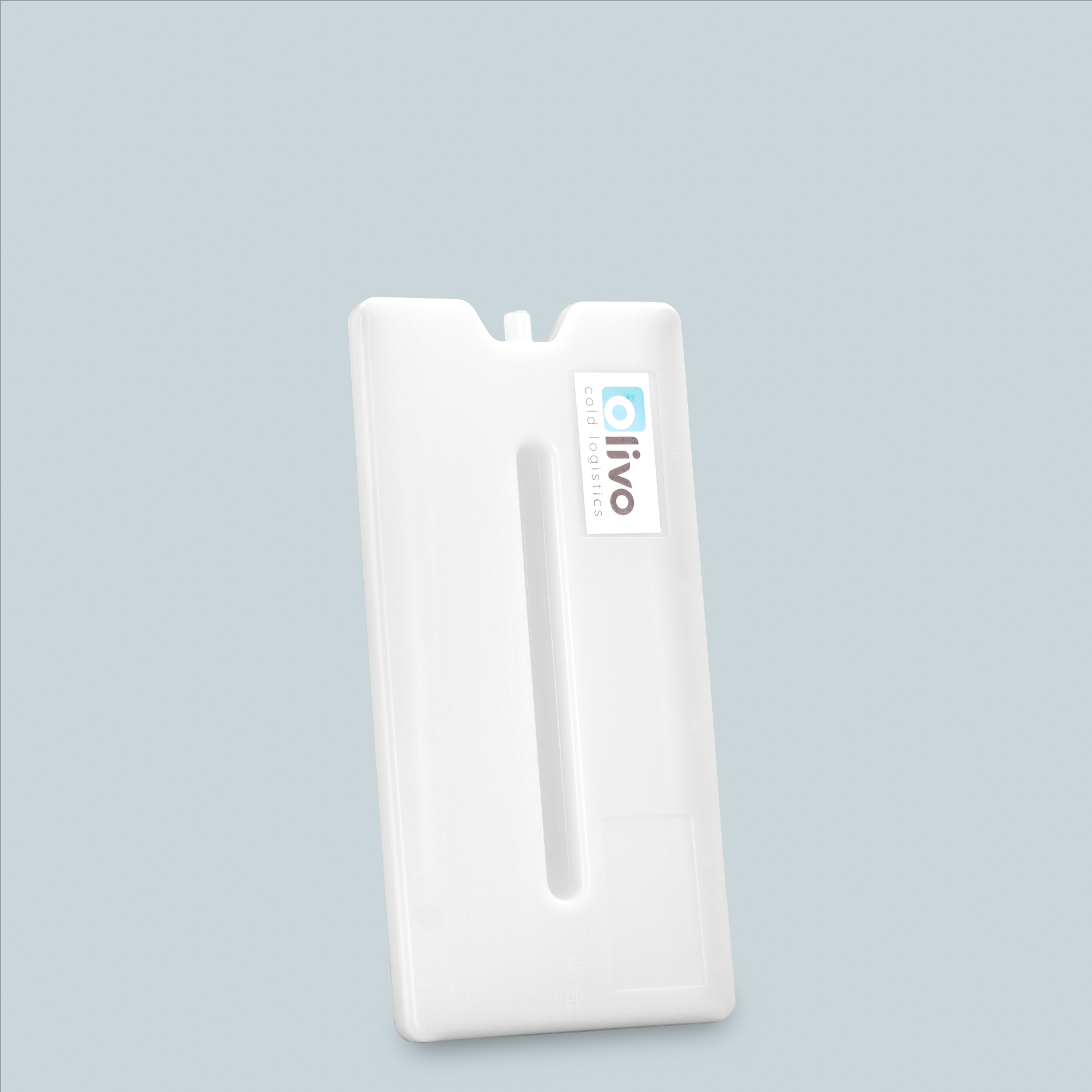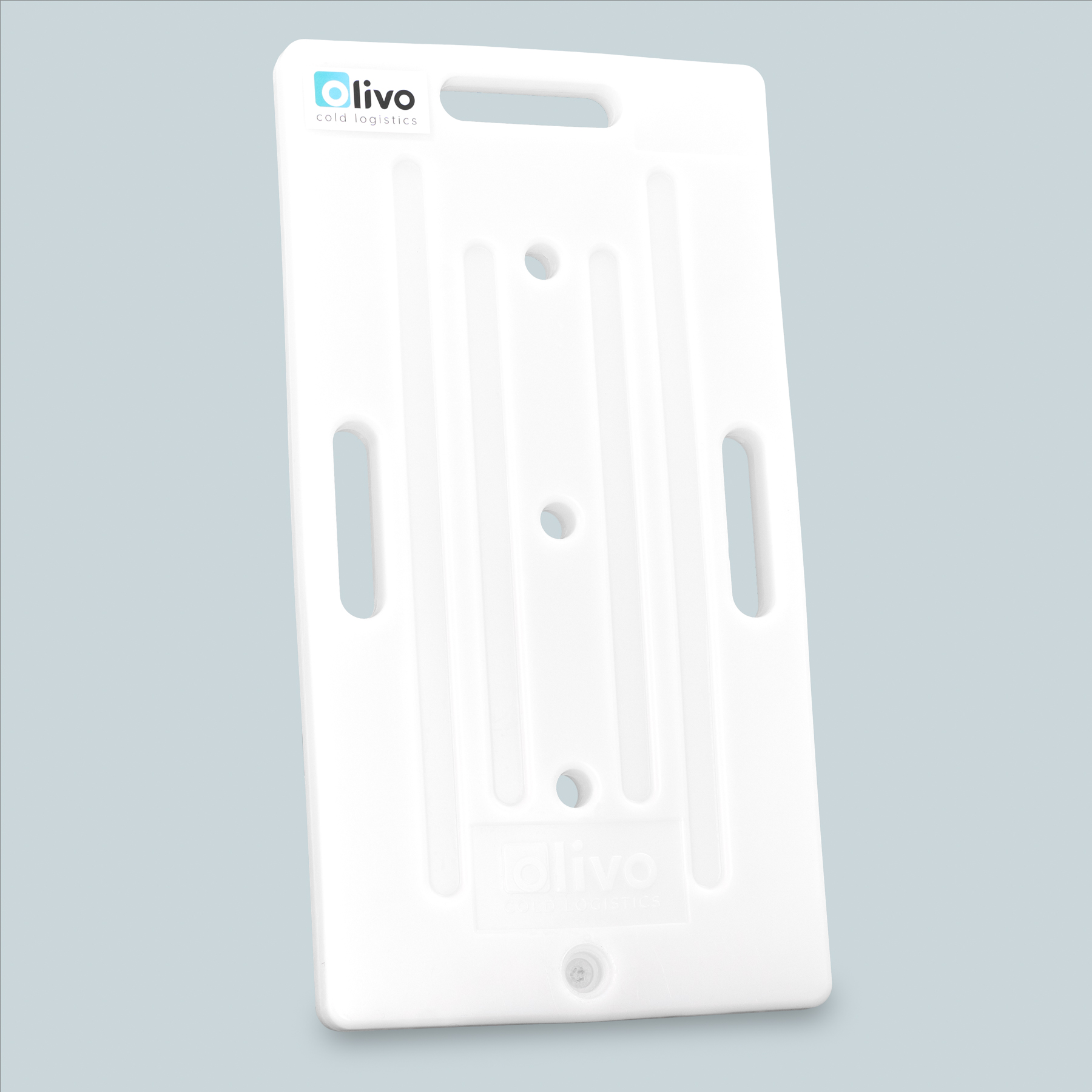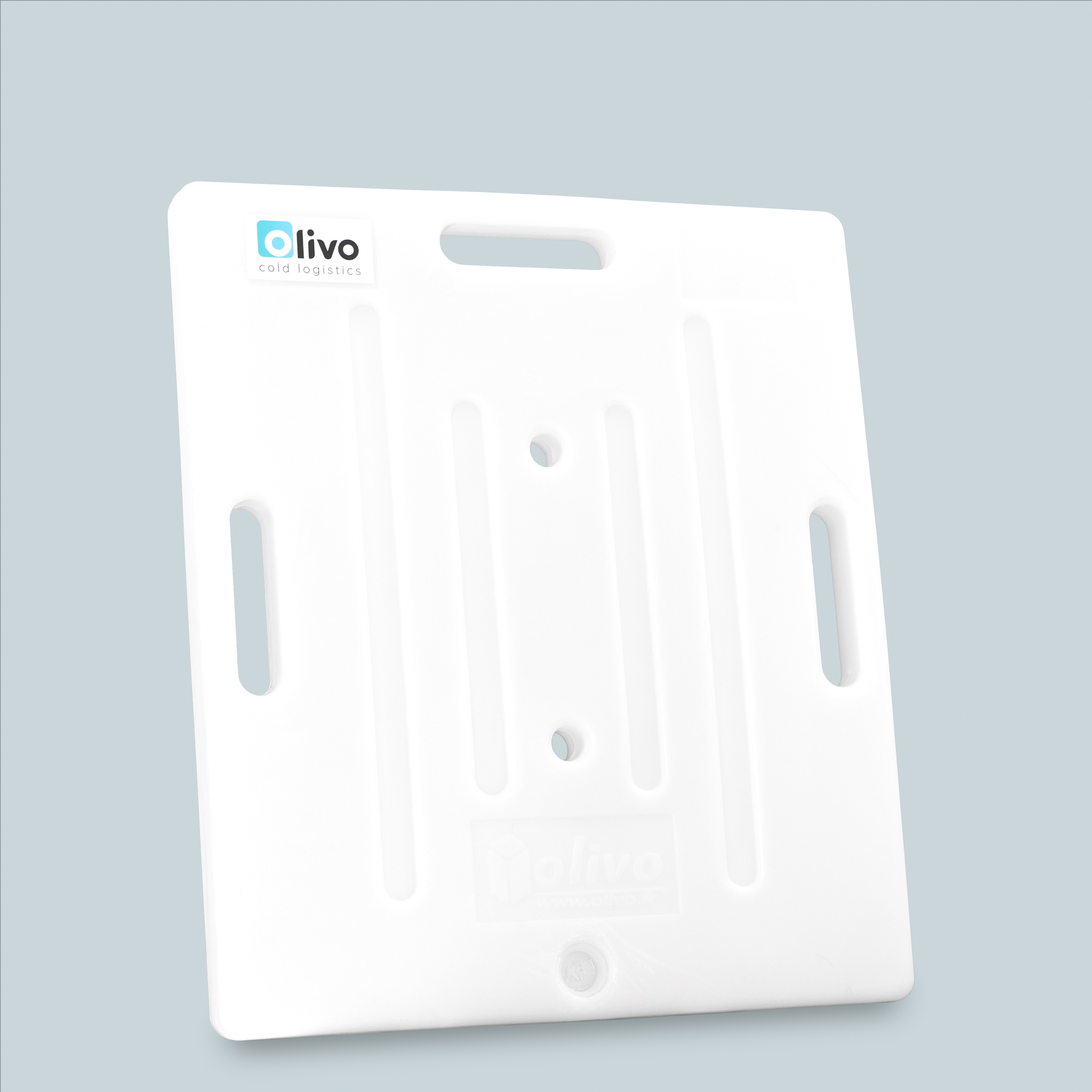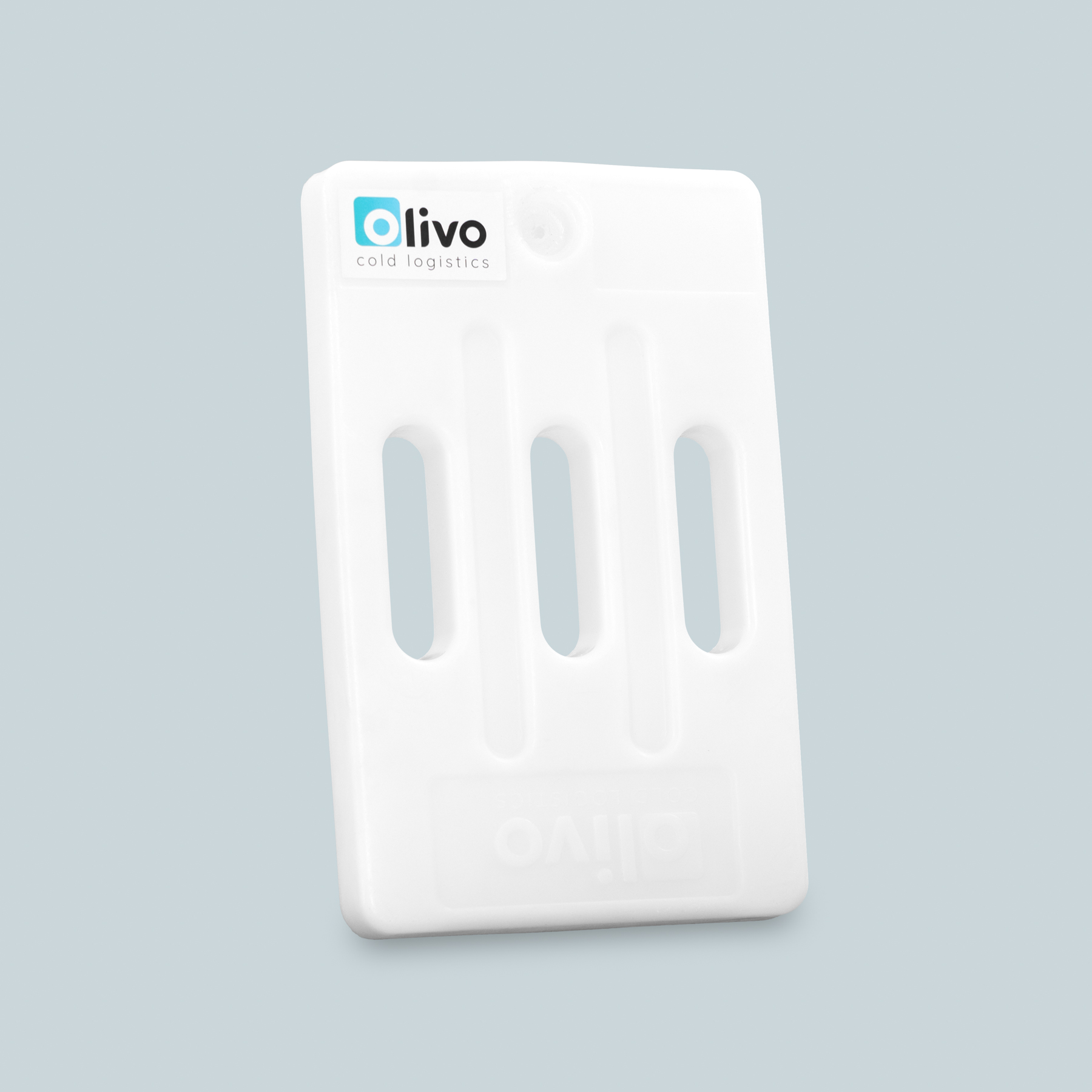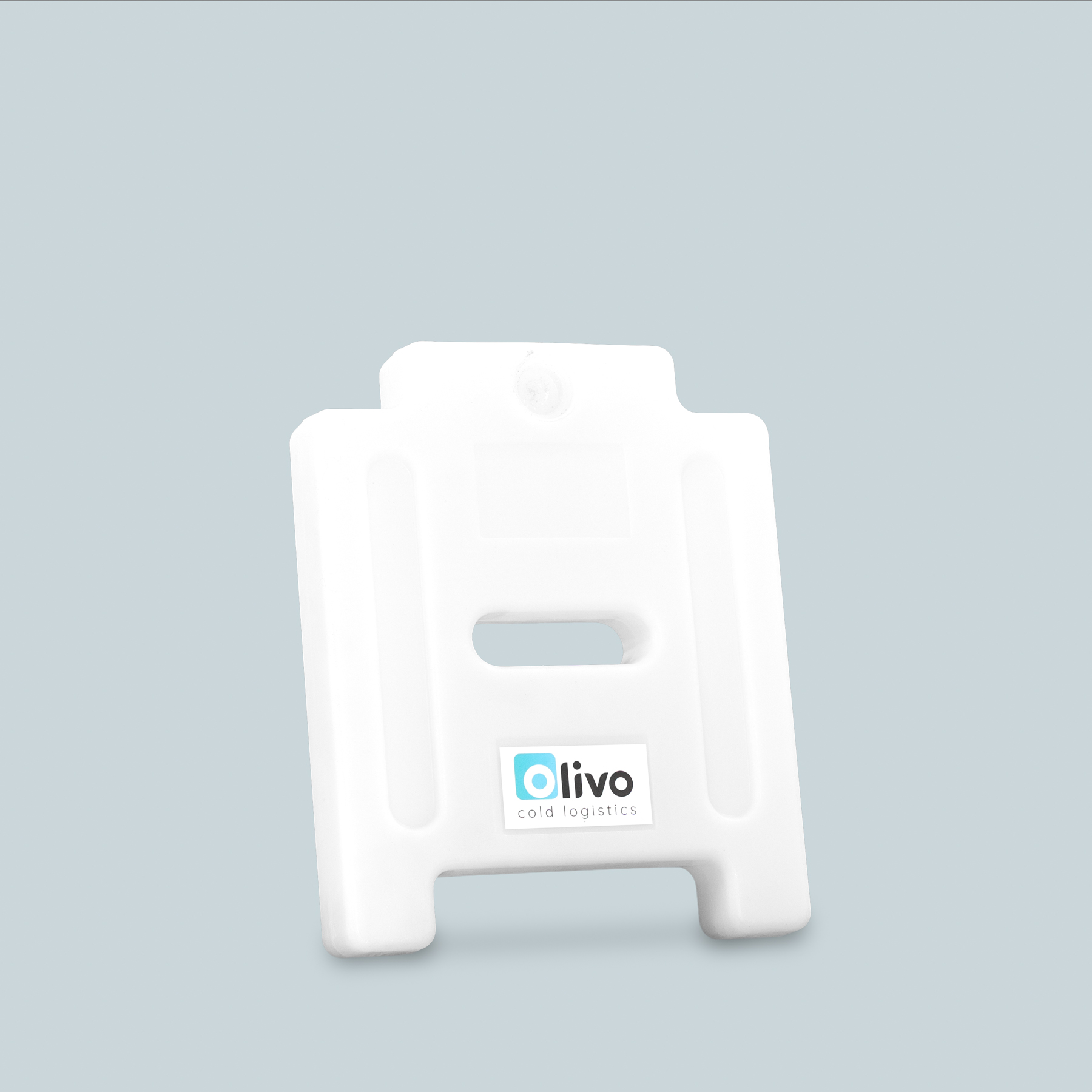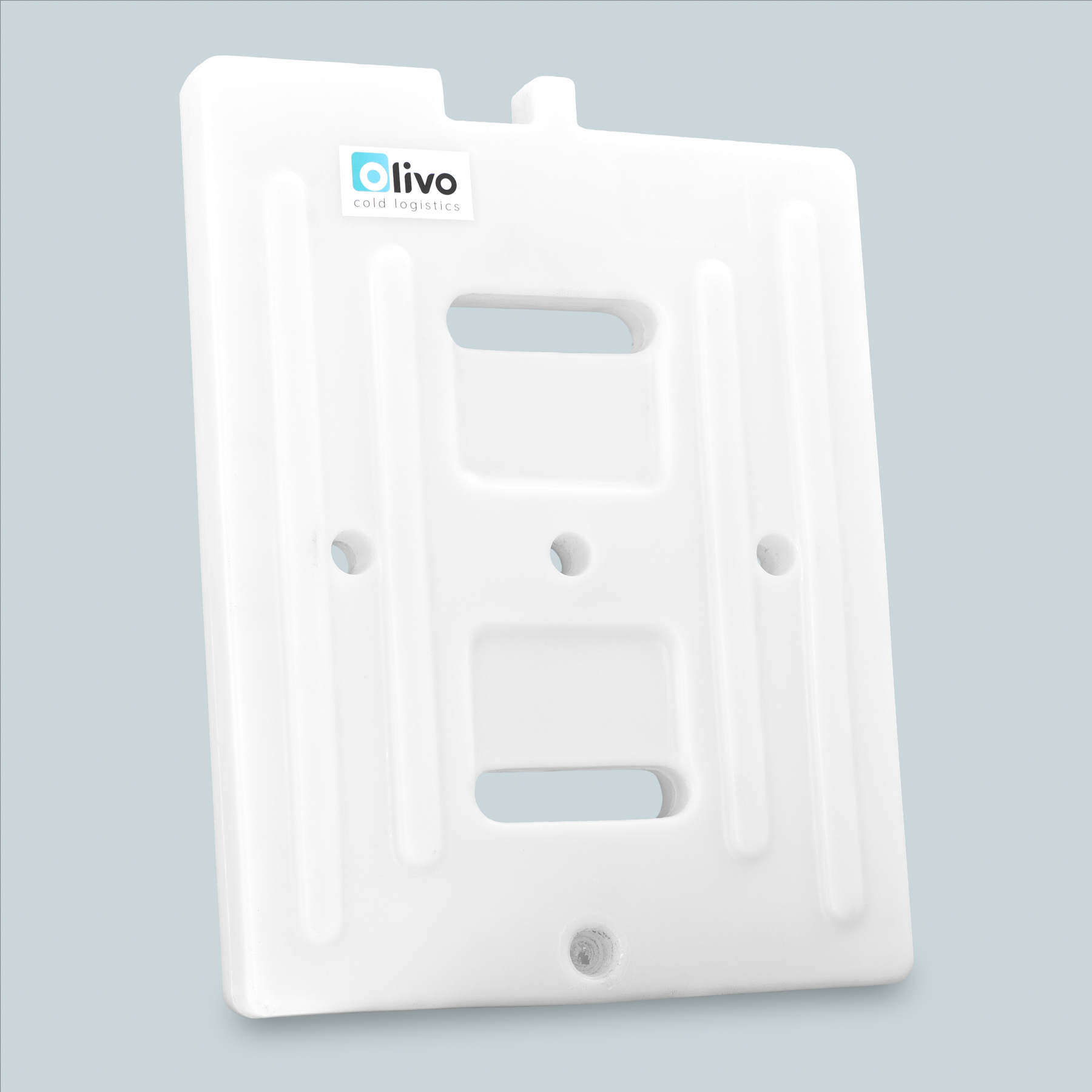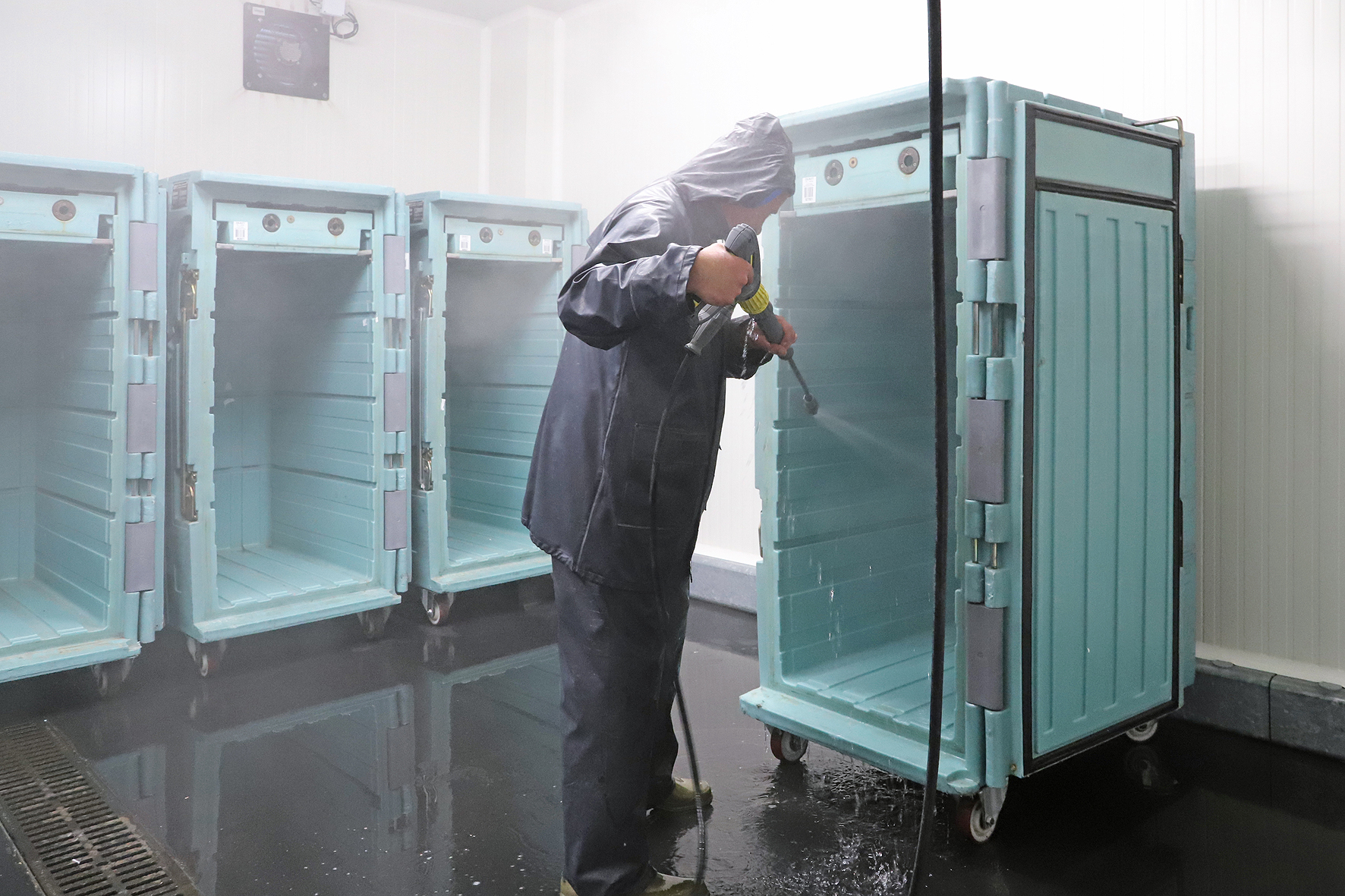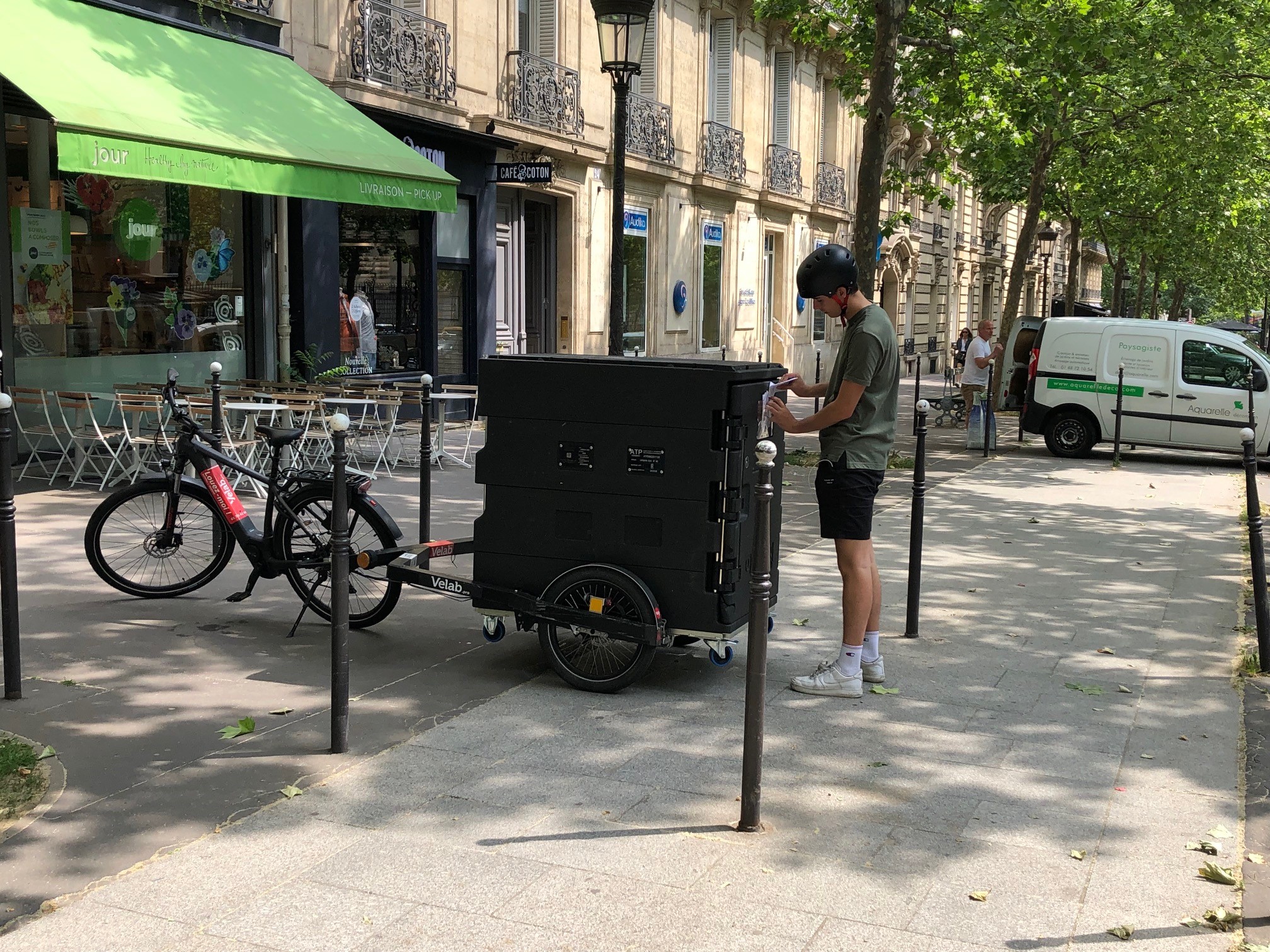Eutectic cold
A rechargeable cooling
What is eutectic plate?
Olivo eutectic plates are professional cold accumulators. All you have to do is freeze them and you’re ready to go. Simple, economical and effective refrigeration.
Choose the temperature of the eutectic plate from 7 eutectic liquids capable of handling negative (-20°C), positive (+2°C) or ambient (+20°C) preservation.
The terms eutectic cartridge, eutectic block, cooling gel or cooling pack are also used to designate the eutectic plate.
Discover a wide range of eutectic plates for refrigerating large-capacity ROLL-type isothermal containers or small-volume BOX-type isothermal packaging.
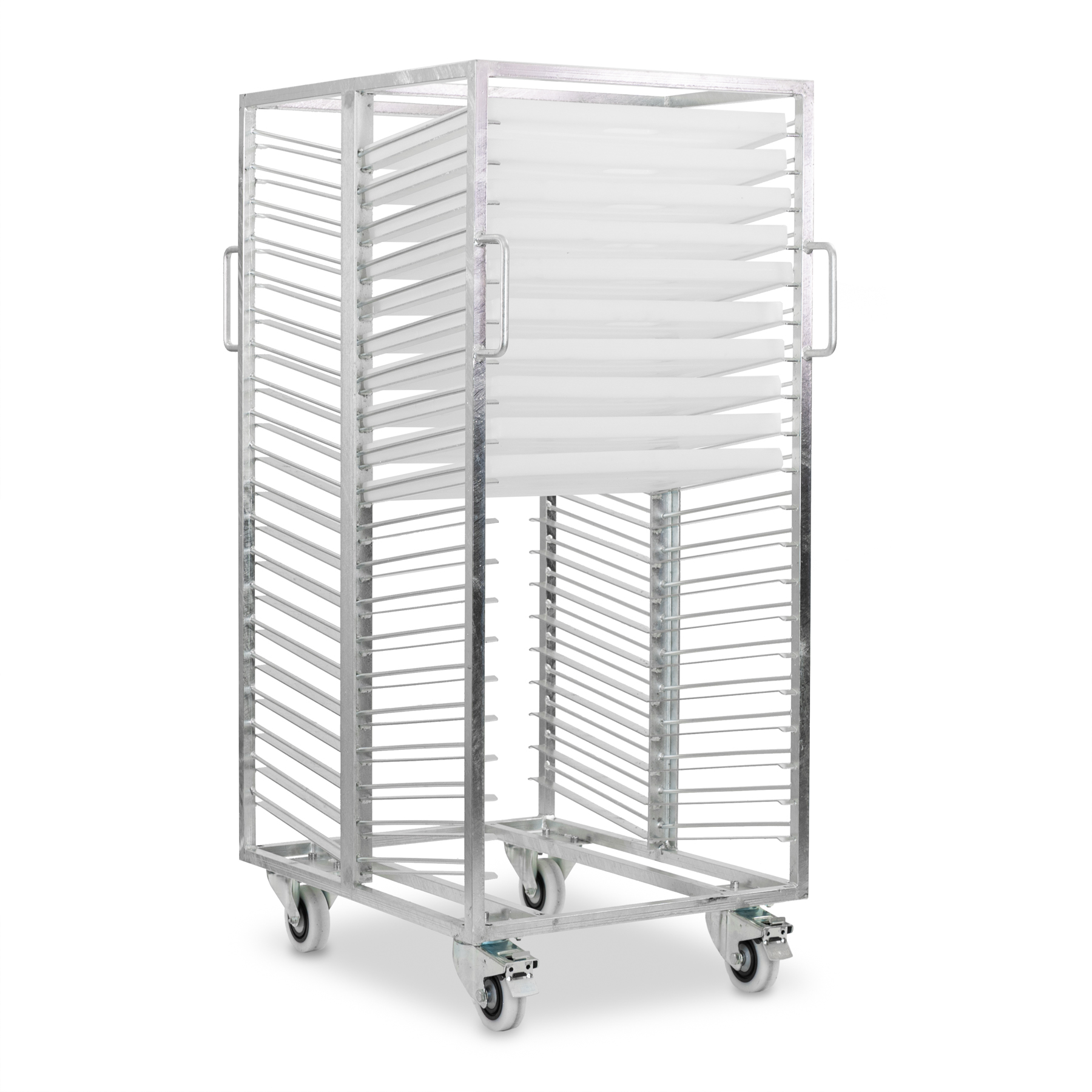
Our must have
To order a eutectic plate, please write your request in the text box provided.

Eutectic fluid
even qualities of eutectic liquid are available to maintain positive, negative or “hot” temperatures, in all climatic conditions of transport.
Choosing the right coolant pack for your needs involves combining the thermal capacity of the plate with the quality of the temperature restored. Don’t hesitate to contact us for advice:
- choosing the plate temperature
- to determine the number of eutectic plates to use
The temperature in an isothermal container refrigerated with cold eutectic plates can be maintained for up to 24 hours or more.
Eutectic cold, frequently asked questions
-
Cooling and temperature maintenance
Does ROLL O’CITY comply with the ATP agreement?
The ROLL O’CITY by Olivo is designed to meet the strictest requirements for transporting temperature-sensitive products. It complies with the ATP (Agreement on the International Carriage of Perishable Goods). Obtaining this certification ensures that the equipment used for transporting food, pharmaceuticals, or other temperature-sensitive products meets strict criteria to ensure their quality and safety throughout the journey.
The ROLL O’CITY has been rigorously tested and validated to ensure it maintains a stable temperature, which is crucial for preserving the cold chain. Its expanded polypropylene (PPe) structure and technical features minimize temperature variations and effectively protect products against thermal excursions.
Additionally, the ROLL O’CITY is equipped with an EPDM sealing gasket, providing optimal protection against infiltration and enhancing its thermal efficiency.
With a K-value of 0.34 W/m².°C, the ROLL O’CITY guarantees excellent thermal insulation, helping to maintain products at the desired temperature. Thanks to its ATP compliance and exceptional performance, this insulated container allows transportation and distribution companies to ensure compliance with health and safety standards while optimizing last-mile logistics for high-quality deliveries.
-
Isothermal containers
Is the ROLL O’CITY waterproof?
The ROLL O’CITY is completely waterproof due to several factors:
Its design: an EPDM sealing gasket located at the door’s cap, ensuring the secure loading and protecting it from temperature excursions and infiltration. The properties of PPe: due to its closed-cell structure, PPe offers some resistance to moisture. PPe is a non-porous material, meaning it does not absorb liquids or dirt.
-
Cooling and temperature maintenance
Do you offer containers with separate compartments for hot and cold dishes?
It is entirely possible to combine the use of the BOX into an insulated container. The BOX can be used for the transportation of fresh or frozen products, while the container can be used for the delivery of products within a different temperature range. These logistical parameters should be specified when presenting your logistical challenges to our Olivo expert. Additionally, the cooling source will be determined based on all your logistical parameters.

Long-lasting cold
Olivo eutectic gels are non-toxic.
All Olivo eutectic solutions are stable and do not degrade over time.
You can also use eutectic cartridges for an unlimited period of time, as they retain their cooling power.
Olivo has chosen to produce transparent envelopes because each eutectic solution is coloured. So if the label marking the eutectic plate becomes less legible over time, the colour of the eutectic solution speaks for itself. This is of particular interest to users who deal with two temperatures and need to distinguish between FRESH and FROST accumulators.
The cold accumulator casing is made of food-grade polyethylene.
For larger models, the shell is rotomoulded for greater strength. Integrated, moulded-in handles make them easy to handle.
The casing of small-format accumulators is blow-moulded to reduce weight.
Thermodynamic principle
Olivo eutectic liquids are aqueous solutions containing mineral salts and refrigerants.
A eutectic solution is essentially a mixture of water and salts whose melting point (or freezing point) is constant and lower than that of water. For example, a -17°C eutectic liquid will melt (or solidify) at -17°C: its melting point is much lower than 0°C, the melting point of water.
The best-known eutectic is the water/salt mixture: salting roads in winter lowers the freezing temperature of the road surface.
When a pure liquid thaws (changes state), its temperature remains constant until the liquid has completely melted.
The capacity of a eutectic liquid is similar: to restore a constant temperature (that of the melting point) throughout its thawing (change of state).
The quality of a eutectic solution is judged by the stability of its temperature range. As it thaws, the eutectic liquid slowly releases its cold to a perfectly stable temperature. This is called a temperature plateau because if we measure the temperature of a -17°C eutectic liquid during the thawing phase, the temperature curve is flat and continuous at the fixed temperature of -17°C.
The quality of a eutectic solution is defined by the cooling power it provides during thawing and by the stability of its temperature plateau.
The operation of a cold accumulator is very simple. The eutectic plate is frozen before being placed inside the isothermal container.
During the freezing phase, the eutectic liquid accumulates cold. This is why the eutectic plate is often referred to as a cold accumulator.
Once placed in the isothermal box, the plate releases the cold accumulated during the freezing process, providing a constant, regulated cold inside the container.
The eutectic plate is recharged by freezing for further use.
The eutectic plate(s) should be placed at the top of the container, above the product load if possible. OLIVO isothermal containers have internal grooves to optimise natural convection inside the isothermal container and allow the cold air from the eutectic plate to circulate around and through the load being transported.
Freezing the plates
The eutectic liquid must be perfectly frozen and solidified before using the eutectic plate. Without deep freezing, the eutectic liquid will not accumulate enough calories and its cooling power will be degraded.
At what temperature should the plate be frozen? The freezing temperature of the eutectic plate must be at least 5°C below the melting temperature of the eutectic liquid. For example, a -17°C eutectic plate, i.e. one with a melting point of -17°C, should be frozen at a minimum of -22°C.
To speed up freezing, the eutectic plates should be separated from each other inside the freezing chamber. Stacking them without cold circulation considerably increases their freezing time.
The correct freezing of cold accumulators can be checked either visually if the envelope is transparent, or dynamically by shaking the accumulator; any movement resulting in a liquid or semi-liquid state indicates that the eutectic solution is not frozen through.
The freezing time can vary from 6 to 24 hours depending on the refrigeration cabinet used. A double set of eutectic plates gives you immediate availability of cold, with one set being permanently recharged.
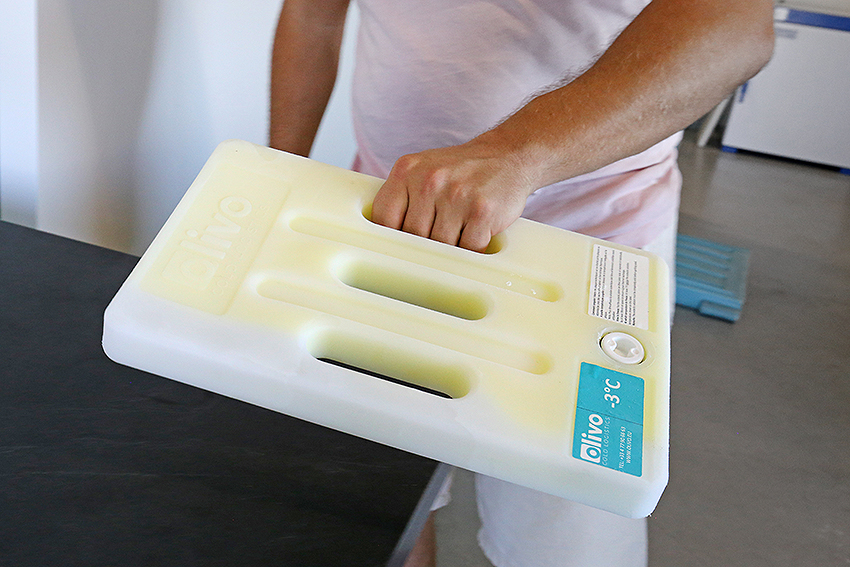
Handling hot eutectic plates
For farms using a large number of cold accumulators, it is important to plan their management.
Olivo offers plate trolleys that can be used in a number of ways:
- collect the melted eutectic plates on their return
- freeze them in the best possible conditions, the eutectic plates being stored at an angle and sufficiently separated to optimise their freezing
- organise the handling of the frozen eutectic plates to the station where they are placed in the isothermal containers
- limiting the manual handling of frozen eutectic plates
Hot plate is probably not the right word, since Olivo hot eutectic plates can maintain an interior temperature of between +15°C and +25°C in extreme conditions, whether very cold or very hot.
- keeping chocolate at around +20°C when it’s +35°C outside
- keeping a pharmaceutical product at around +20°C when the winter temperature is -10°C
The hot plate is used in the same way as a cold eutectic plate. Its preparation before use is different.
In winter conditions (-10°C) :
- the hot eutectic plate must be heated in an enclosure to a temperature above +25°C
- above +25°C the eutectic solution, which is solid, becomes liquid
- placed in the container in the liquid state, the plate absorbs heat loss from the load
Summer conditions (+35°C ambient)
- the hot eutectic plate must be cooled to a temperature below +15°C
- below +15°C the liquid eutectic solution becomes solid
- placed in the container in the solid state, the plate releases its calories to compensate for the heat entering the isothermal container
Our news in cold logistics
View the blog
Our solutions of insulated containers
Cold sources designed for your containers

